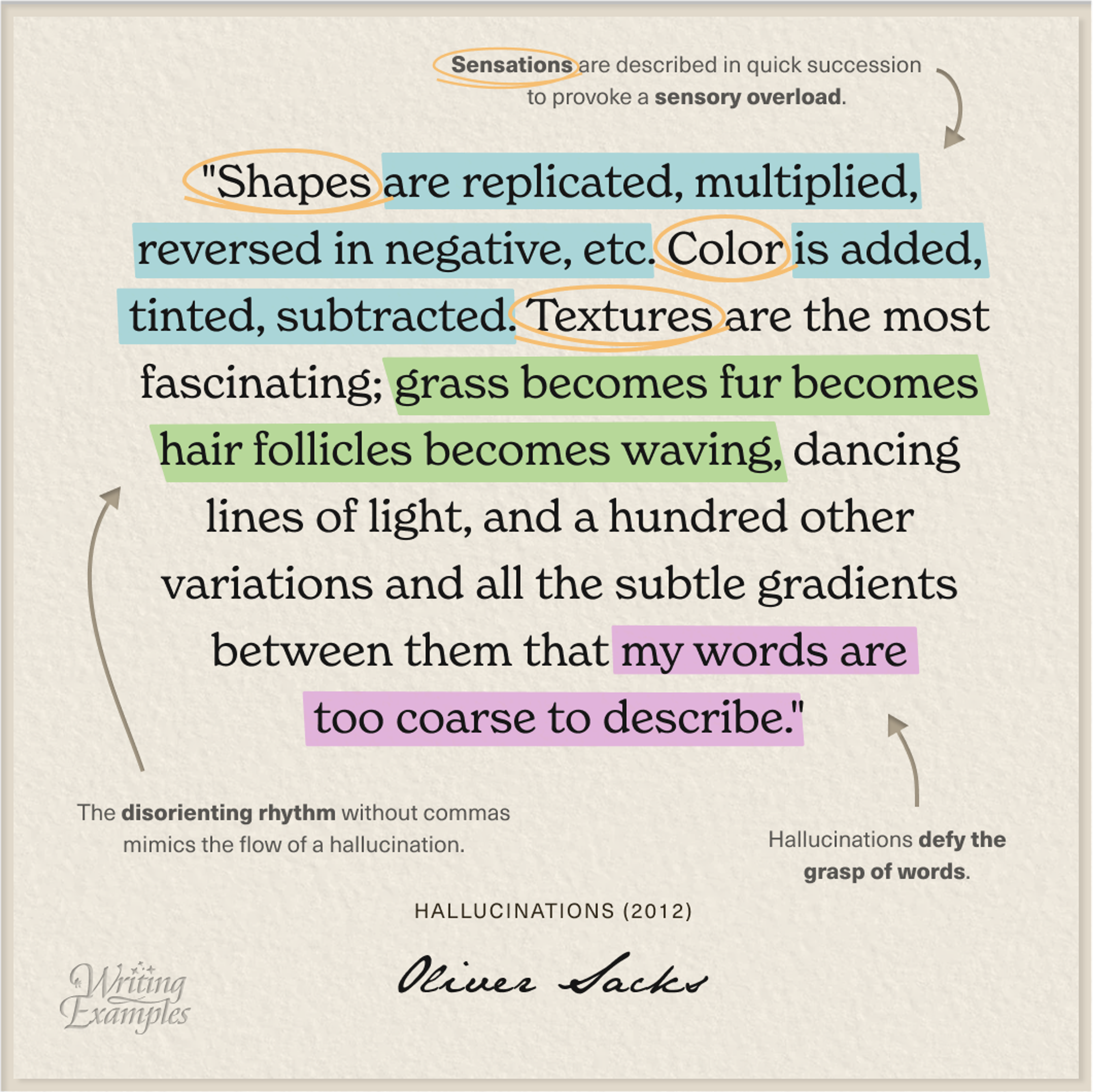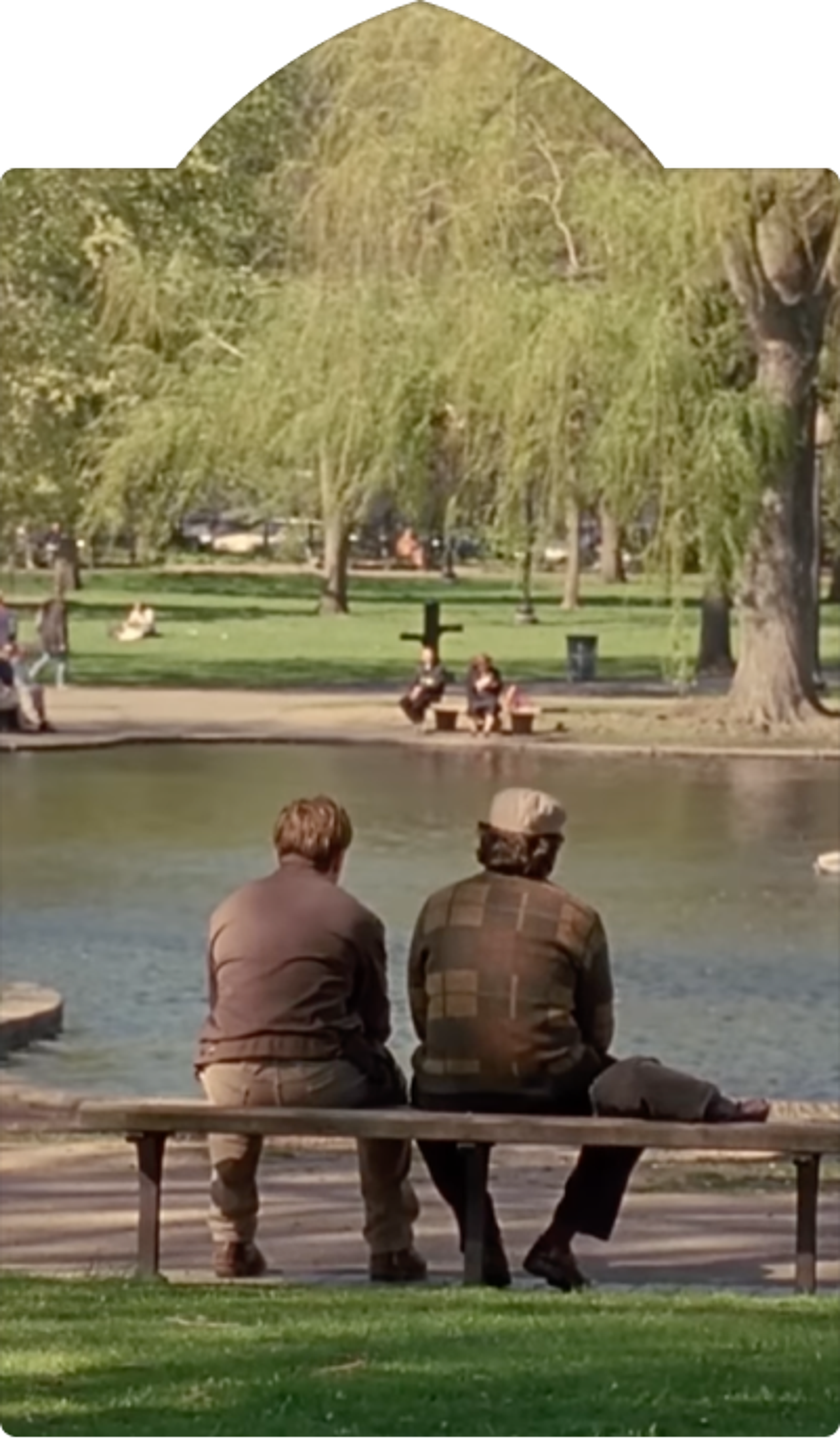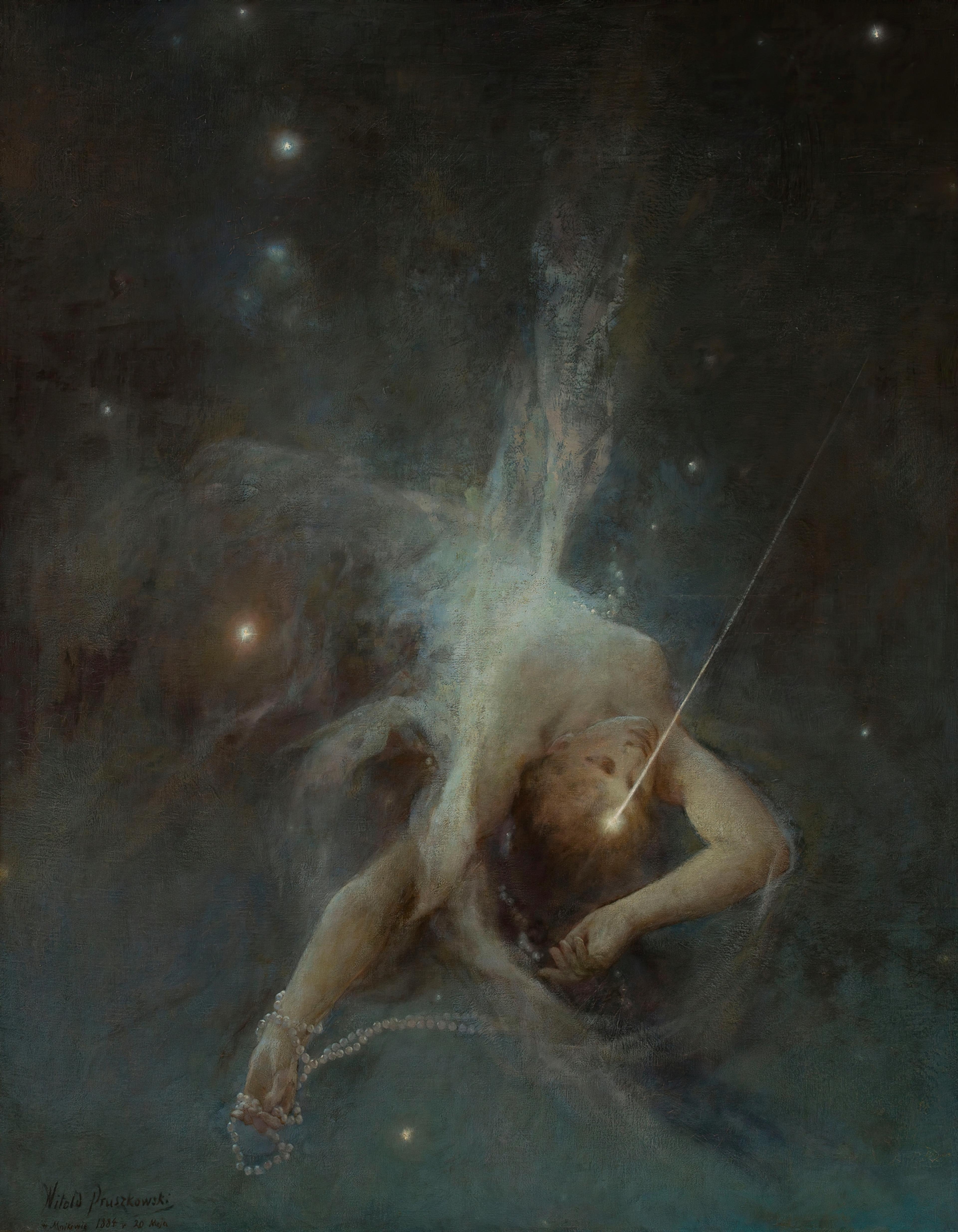HOW TO
Describe aHallucination
By
David Perell


f hallucinations defy the grasp of words, how should we try to describe them?
Oliver Sacks leans on the rhythm of his sentences. The writing has a childlike restlessness, and its cadence mirrors the dizzying, ever-intensifying flow of a hallucination where every time he paints the outline of a vision, he moves right onto the next one.
The paragraph plunges us into a state of sensory overload. First, one list. Then, another. Both lists have a ricochet quality about them. The third sentence is where Sacks moves from clear-cut categories to dreamy gradients, until he practically throws his hands in the air as if to concede that hallucinations transcend the limits of language.
Take comfort in this. If hallucinations are hard for an award-winning writer to describe, they’ll probably be a challenge for you too. If you choose to write about them, they’re a place where style can enhance (and maybe even become) the substance.
With hallucinations, rhythm can convey what individual words cannot. Instead of trying to pin one down with precise language, write with a flow that matches their dreamlike, ever-changing nature.
Read More
Write like the Greats
New Writing Examples, right in your inbox.
“Beautiful, playful, and high-quality. Kudos.”
Clayton
from Missouri, USA



